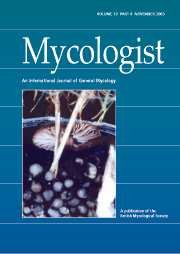Article contents
Plants parasitic on fungi: unearthing the fungi in myco-heterotrophs and debunking the ‘saprophytic’ plant myth
Published online by Cambridge University Press: 25 October 2005
Abstract
The myco-heterotrophs comprise over 400 achlorophyllous plant species in 87 genera that are parasitic upon fungi, and exploit them as their principle source of carbon. In addition, there are estimated to be over 30,000 species, comprising approximately 10% of the plant kingdom, that depend upon myco-heterotrophy for establishment from dust seeds or spores. These initially myco-heterotrophic plants require fungal-carbon during their critical early establishment phases but go on to produce green shoots on emerging into light from soil or as epiphytes on other plants. This extraordinary mode of nutrition, first recognised more than a century ago, is hidden in the initially myco-heterotrophic plants and in the fully achlorophyllous species continues to be misrepresented by many botanists as a form of ‘saprophytism’. As a consequence, the parasitic dependence of these plants upon fungi is not widely appreciated. This is the only group of parasitic plants for which, in over 90% of cases, the host species (which are fungi) providing their carbon and nutrients remain unidentified. This article reviews some of the exciting recent progress made in understanding the nature and properties of fungi parasitized by plants, and in the use of distinctive carbon and nitrogen isotope ‘signatures’ of myco-heterotrophs to quantify fungal dependence in plants with green shoots that remain partially myco-heterotrophic in adulthood.
- Type
- Original Article
- Information
- Copyright
- © 2005 The British Mycological Society
- 2
- Cited by




